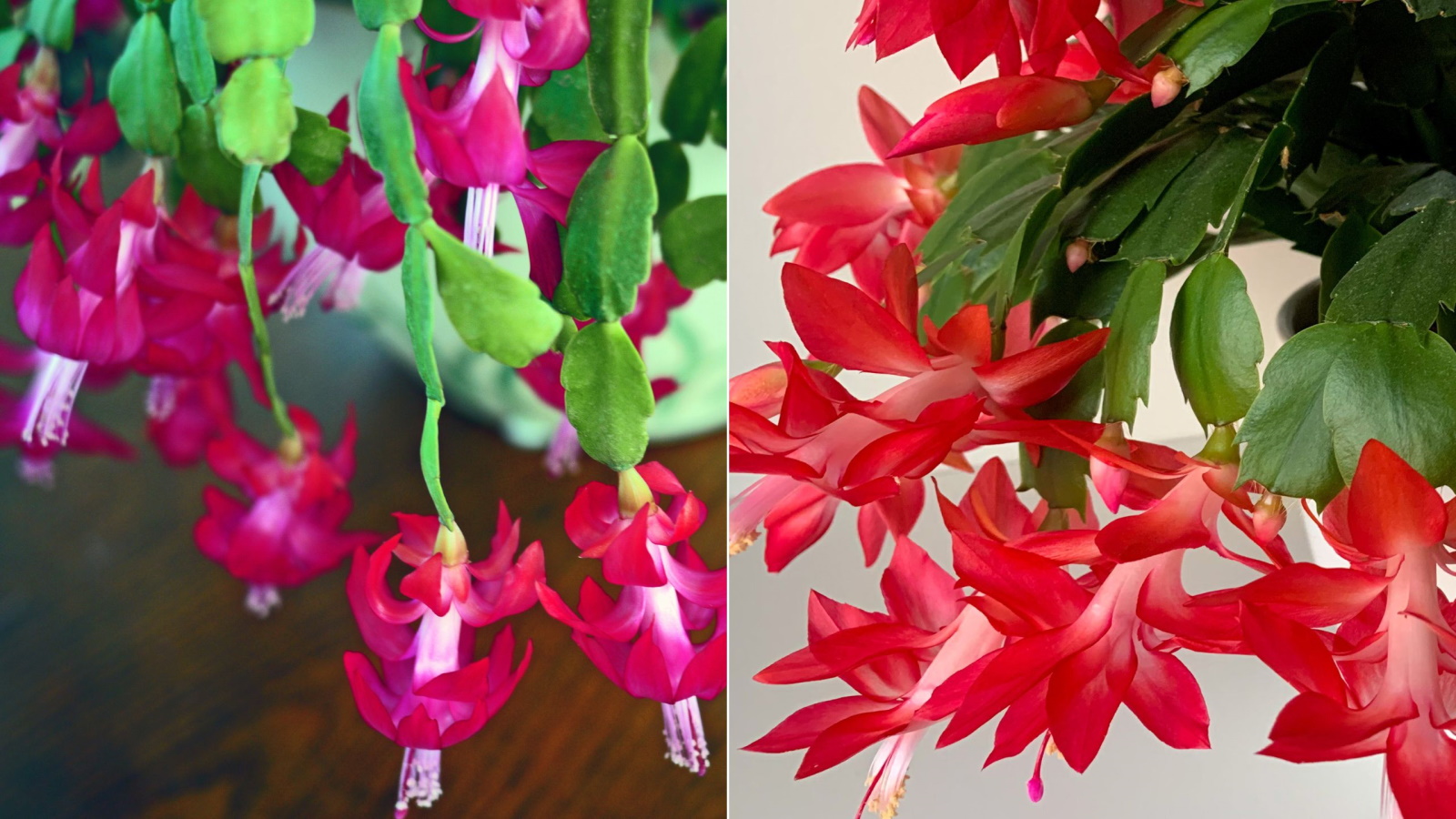
When it comes to Thanksgiving and Christmas, the two holidays have their own traditions and quirks that make it easy for us to differentiate between these celebrations. However, when it comes to the eponymously named cactuses, the distinction is not always as clear. They are both from the genus Schlumbergera, and are closely related, but there are some important differences.
Questions surrounding these plant are already in abundance. At this time of year it's vital to know how to correctly care for and grow a Christmas cactus, and of course how to make a Christmas cactus bloom, but perhaps the most prominent question is how to differentiate the festive plant from its very similar Thanksgiving counterpart.
If you're not sure which plant you own, here's everything you need to know to tell the two cactuses apart – so you can celebrate the holiday with the right plant at the right time.
Thanksgiving cactus vs Christmas cactus: the key differences

'Whenever I go to identify a plant, the first thing to do is study the leaves,' says Rachel Bull, Head of Gardens at H&G. 'The most notable difference between a Christmas cactus and a Thanksgiving cactus is the shape of their leaves.'
A Thanksgiving cactus, Schlumbergera truncata, has sharp and claw-shaped edges at the leaf edges, whilst on a Christmas cactus, Schlumbergera bridgesii, these are scalloped and shaped like tear-drops.
'You could describe the leaves of a Thanksgiving cactus as spiky, whereas the Christmas cactus is much smoother,' says Rachel. 'Thanksgiving cactuses also tend to flower in shades of deep red or purple, whereas the Christmas alternative is often white, pink, or red in color.'
However, their differences are not limited to the aesthetic. Another key difference is the time of year each cactus blooms.
'A Thanksgiving cactus usually blooms in late fall, typically in November, and fittingly in time for Thanksgiving. Meanwhile, a Christmas cactus blooms in winter or very early spring – typically in December,' says Tenielle Jordison, H&G gardens writer and houseplant fanatic.
There is another slight difference in the shape of the plants as they mature, adds Tenielle. 'Christmas cacti tend to drape and trail more as their leaves get longer, whereas a Thanksgiving cactus can maintain a more upright shape.'
You can find Thanksgiving cactus plants available at Walmart.
FAQs
How can I be sure which variety of Schlumbergera cactus I'm buying?
Confusingly, a lot of retailers label both Christmas and Thanksgiving cactuses as 'holiday cactuses'. This is not helpful if you are looking to buy one variety in particular. Always check the plant label and look for the botanical or Latin name. If there isn't one stipulated on the label, the shape of the leaves will be your best indicator.
Do Thanksgiving and Christmas cacti have anything in common?
Yes - the two plants have a lot in common. Aside from their similar appearance, their care requirements are much the same. Both plants also require periods of darkness in order to set buds and bloom in late fall and winter.
If you positioned your Schlumbergera outside over the summer months, now is the time to bring it indoors and make sure to keep your Christmas cactus in the dark for a while, for it to bloom in time for the holidays. For maximum longevity, you can read up on how to repot a Christmas cactus to ensure you get the most from your plant and enjoy its festive colors year after year.







